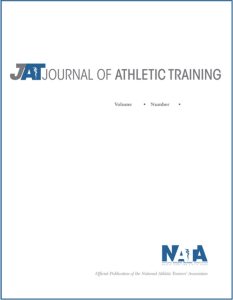Publications

The Utility of Myotonometry in Musculoskeletal Rehabilitation and Human Performance Programming
Authors: Jared M. McGowen 1, 2, Carrie W. Hoppes 4, Jeff S. Forsse 1, Stephanie R. Albin 6, John Abt 5, Shane L. Koppenhaver 1, 3
Affiliations:
- Department of Health, Human Performance, and Recreation, Baylor University, Waco, Texas, USA
- U.S. Army Medical Professional Training Brigade, San Antonio, Texas, USA
- Doctoral Program in Physical Therapy, Baylor University, Waco, Texas, USA
- Army-Baylor University Doctoral Program in Physical Therapy, San Antonio, Texas, USA
- Children’s Health Andrews Institute for Orthopaedics and Sports Medicine, Plano, Texas, USA
- School of Physical Therapy, Regis University, Denver, CO, USA
Journal: Journal of Athletic Training - July 2022, Online First (DOI: 10.4085/1062-6050-0616.21)
-
Field & Applications:
- Review
- Validity
- Reliability
- Myotonometry is a reliable method to objectively quantify musculotendinous stiffness in palpable soft‐tissue structures.
Myotonometry is a relatively novel method used to quantify the biomechanical and viscoelastic properties (stiffness, compliance, tone, elasticity, creep, mechanical relaxation) of palpable musculotendinous structures with portable mechanical devices called myotonometers. Myotonometers obtain these measures by recording the magnitude of radial tissue deformation that occurs in response to the amount of force that is perpendicularly applied to the tissue through a device’s probe.
Myotonometric parameters such as stiffness and compliance have repeatedly demonstrated strong correlations with force production and muscle activation. Paradoxically, individual muscle stiffness measures have been associated with both superior athletic performance and higher incidence of injury. This suggest there may be optimal stiffness levels that promotes athletic performance while too much or too little may lead to an increased risk of injury.
Numerous studies suggest that myotonometry may assist practitioners in the development of performance and rehabilitation programs that improves athletic performance, mitigates injury risk, guides therapeutic interventions, and optimizes return to activity decision making. Thus, the purpose of this narrative review is to summarize the potential utility of myotonometry as a clinical tool that assists musculoskeletal clinicians with the diagnosis, rehabilitation, and prevention of athletic injuries.
Keywords: myotonometry, stiffness, rehabilitation, performance optimization, clinical decision making
Studies have demonstrated acceptable reliability and validity of myotonometry within the context of a variety of musculoskeletal conditions. The relationships that exist between stiffness, force production, athletic performance, and musculoskeletal health imply that myotonometric devices may serve as useful rehabilitative and performance assessment tools. However, further validation is needed before recommendations to include myotonometry within clinical practice can be made with confidence. Future research is required to solidify myotonometry as a valuable method of musculotendinous health monitoring that facilitates maximizing human performance, mitigating injury risk, and enhancing treatment effectiveness of musculoskeletal injuries.


